INTRODUCTION

Whenever a familiar person (family or friend) comes asking for my advice in regard to setting up a local area network the very first i ask is whether that will be at home or at the office. Some of you may not be aware of this but although a regular modem/router will be sufficient for a local area network at home consisting by let's say 3-4 systems tops (even more wirelessly if data throughput performance is not an issue) for an office network with a far larger number of systems the obvious solution is using a extra switch (especially if PoE/+ - power over Ethernet - is a needed feature). Of course much like everything else in the market there are plenty of switches for one to choose from unmanaged models which don't require anything extra other than plugging your devices (plug and play) to smart models which combine SMB-oriented features with easy management and finally managed models which offer even more available settings for IT specialists (along with higher performance) compared to smart models. Unmanaged models may not offer any kind of management but have very little (if anything at all) to fear in terms of performance and since their lower price is also a big incentive for end users today we decided to test the LGS124P 24-Port Business PoE+ Switch by our friends over at Linksys.
The Linksys brand has pioneered wireless connectivity since its inception in 1988 with its leading innovation and engineering strategies, and best-in-class technology, design, and customer service. Linksys enables a connected lifestyle for people at home, at work and on the move, and with its award-winning products, simplifies home control, entertainment, security and Internet access through innovative features and a growing application and partner ecosystem. Linksys is part of Belkin International.
The LGS124P may be part of the unmanaged family of rack mount switches by Linksys but that doesn't mean it has no aces up its sleeve especially since it's one of the top models in that line. First and foremost it offers a grand total of 24 RJ45 Gigabit Ethernet ports all of which feature auto speed sensing (10/100/1000Mbps) for maximum performance on each connected device, QoS (quality of service) traffic prioritization for mission critical applications and auto sleep/standby for increased power savings. 12 of those ports also feature PoE+ 802.3at (power over Ethernet) with a combined maximum power budget of 120W (up to 10W max for each port). So the time has come for us to check and see how it performs.
SPECIFICATIONS AND FEATURES
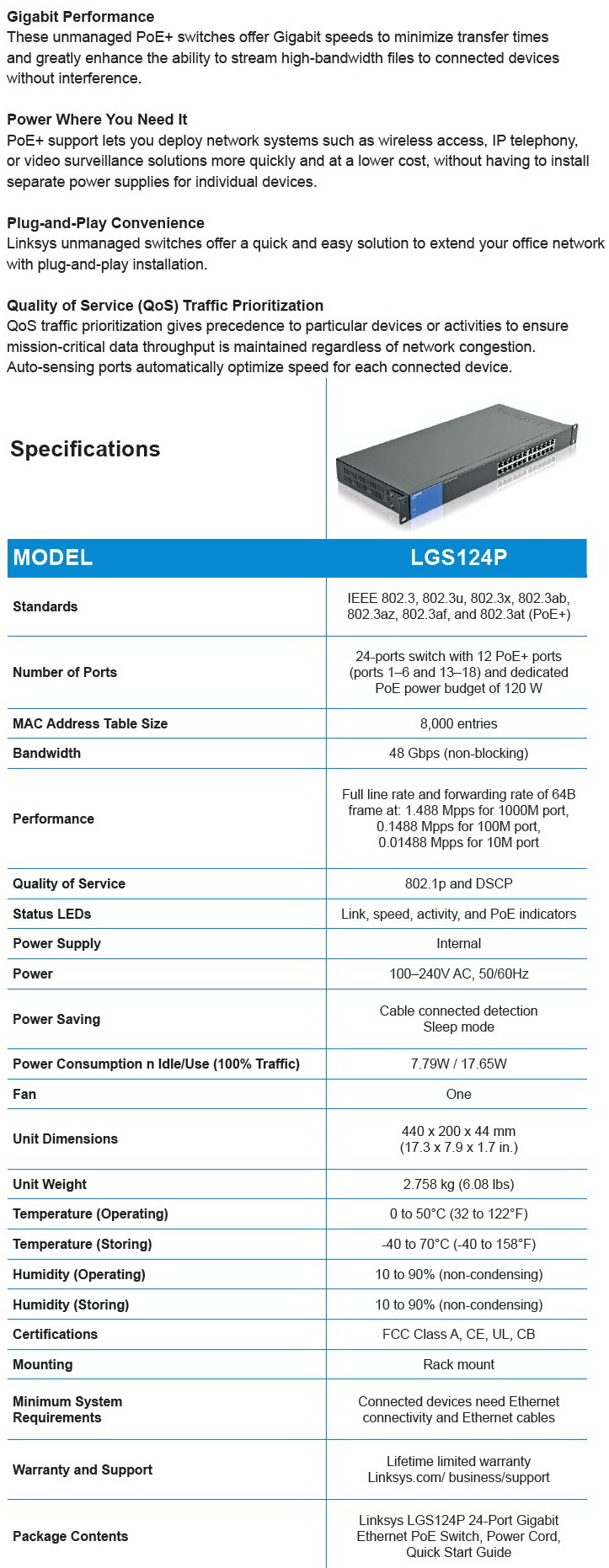
PACKAGING AND CONTENTS
As always with enterprise grade products by Linksys the LGS124P arrived inside a plain cardboard box that has the company name at the front along with a small sticker.
That sticker extends to the base of the box and contains product information such as the serial number and barcode.
The switch is wrapped inside a plastic bag and is kept in place with the help of two foam spacers.
Bundled inside the box along with the LGS124P Linksys has also placed its power cord, rack mounts with their screws, 4 round rubber feet (if you decide not to place it inside a rack), instructions CD and the quick installation guide.
THE LGS124P
Measuring no less than 440mm in length, 200mm in depth and 44mm in height the LGS124P is identical to the higher-end LGS318P switch which we reviewed last year.

 To showcase its size we placed it right over the Netgear XS712T 10GbE switch.
To showcase its size we placed it right over the Netgear XS712T 10GbE switch.
Linksys has placed their name at the top of the switch.
Both sides of the switch are once again perforated (as with all 18 plus ports switches made by Linksys) but there’s only one 40mm intake fan on the right side that spins up to 8200RPM.


 Just like every other model in the market the LGS124P has all its ports at the front (the POE+ ports are tagged) along with a POE+ Max status LED (indicates the amount of power delivered to devices) and the system LED (indicates the current status of the switch).
Just like every other model in the market the LGS124P has all its ports at the front (the POE+ ports are tagged) along with a POE+ Max status LED (indicates the amount of power delivered to devices) and the system LED (indicates the current status of the switch).
The power port is the only thing available at the rear of the LGS124P.
Just like most rack models by default the LGS124P comes without any feet attached since you may use it inside a rack.
TESTING METHODOLOGY
Network switches are pretty much identical to routers so we’ll be using roughly the same testing methodology. So aside the usual networking benchmark by Passmark (v8.0) this time we will start our tests with the latest versions of ATTO (v3.05), Crystal Disk Mark (v5.1.2) something which we couldn’t do in the past since these versions have updated testing methodologies and thus are not compatible with the results we’ve gathered over the years. Also as you’ve already noticed we decided to replace the QCheck by Ixia with Crystal Disk Mark since we feel it’s a more complete choice. To test all network switches we are using two of our desktop systems outfitted with two Kingston HyperX Predator 480GB PCIe SSDs (these SSDs combined with two XT540-AT2 PCIe cards will enable us to also fully test 10GbE network switches) and two laptops to simulate load. Our systems are placed 15m away (connected with CAT7 cables) from the switch in hand and each test is repeated a total of 6 times after which the average scores are recorded into our charts. Our systems have Windows 7 Ultimate SP1 installed with all the updates until the 10th of June 2017.
Also just like with Modem/Routers we will also be recording power consumption is these reviews during all our tests and both the lowest and highest numbers will be available in our charts. Finally when testing network switches with built-in fans (like the XJ712T) we will also record noise levels using our high precision ExTech HD600 Decibel Meter placed about 5-10cm away.
TEST RESULTS
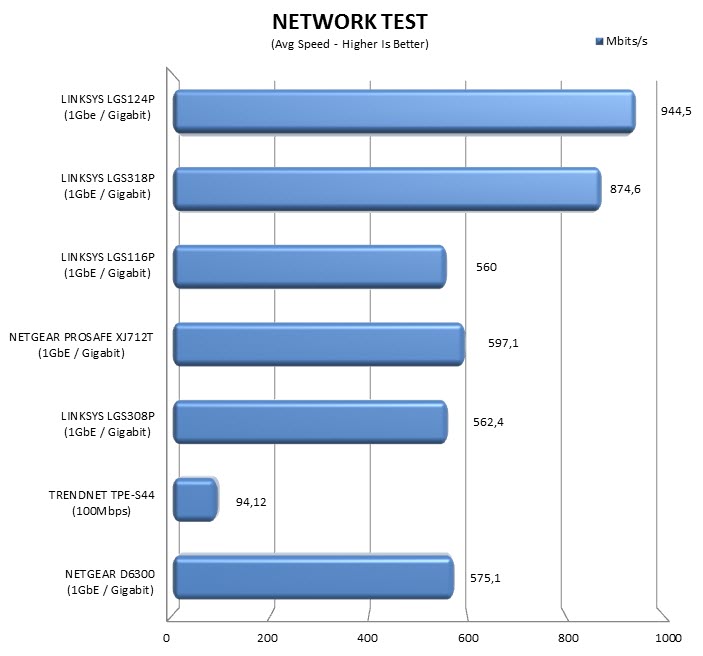
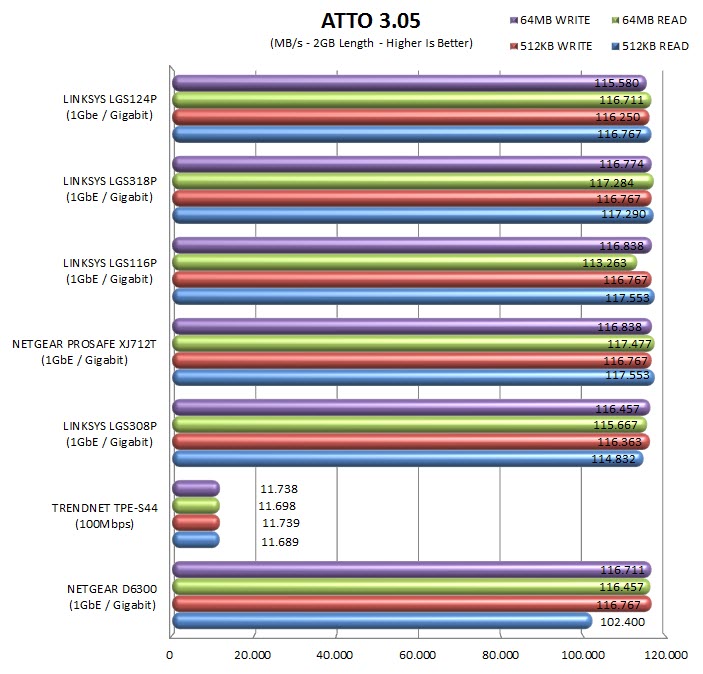



CONCLUSION

Although your typical modem/router (or even a more advanced model) is more than enough to sit at the center of a standard home LAN a separate network switch is always the way to go for anything more than that. The good news is that for home and office use smart and even managed switches offer very little more compared to an unmanaged model so the LGS124P should be good enough to cover most cases out there. Certainly by using a smart or a managed switch you have control over several features/settings many of which are not available in unmanaged models (not even in auto) but the truth of the matter is that to use most of those you need to be nothing less than an IT professional. We also used a total of 7 POE IP cameras with the LGS124P to check that specific feature (like we always do) and it passed with flying colors (to be honest we didn’t expect it to fail, that’s a somewhat basic function as long as it’s supported). That being said the LGS124P has one single drawback and that’s its noise levels which for an office/SMB oriented model is not really a big deal (for home use with multiple systems we always recommend the completely silent LGS116P model).
Currently the LGS124P 24-Port Business POE+ Gigabit Switch by Linksys retails for USD267.64 inside the USA (Amazon.com) and 253Euros inside the EU (Amazon.co.uk) so yes much like the LGS318P (and other Business products) it’s not what we’d call very affordable. Still its target audience will probably place money second to performance, quality and features and since the LGS124P scores high on all three it’s well worth of our Golden Award.

PROS
- Build Quality
- Excellent Performance
- 24 RJ45 Gigabit Ports
- 18 PoE+ Ports
- 120W Maximum Power Output (For PoE+)
- Power Consumption
- Lifetime Warranty
CONS
- Price (For Some)
- Somewhat Loud Fan (At High Temperatures)

 O-Sense
O-Sense





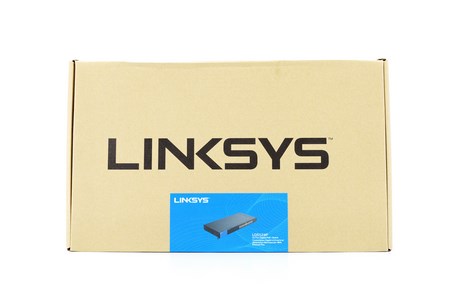







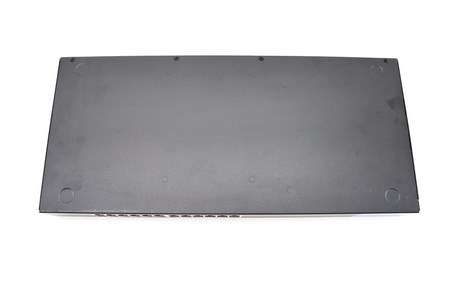


.png)

